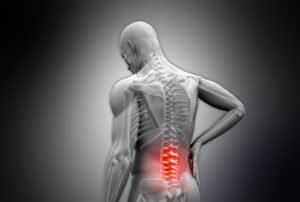 Make An Appointment
Make An Appointment
Shock Absorbers of the Spine….Are Your Discs Compressed or Healthy?
What Is Spinal Compression?
The spine is made up of a stack of bones called vertebrae, which are stacked one on top of the other. In between the bones are the cushion called the discs, which are gel-like structures that are mostly filled with water and are the shock absorbers of the spine. We have talked about the different ways injuries, lifting and twisting, along with postural imbalances can compress or squeeze down on a disc. One side of the disc having increased stress on it puts unequal pressure on the disc. Visualize a water balloon that is being pushed down on one side with your hand—the water is pushed to the other side, and the more pressure increases the likelihood hood that the balloon will eventually burst.
Discs operate in virtually the same way. This is how some patients develop a herniated or bulging disc with no history of acute injury. Gravity provides a daily stress on our spines. Studies show we are actually taller in the morning after lying down for several hours, which allows a decrease in pressure on your discs. By the end of the day, we experience gravitational compression. Over the years, chronic compression can dehydrate discs and, in our senior years, we will likely shrink.
Treatment for Spinal Compression
Computerized spinal decompression therapy is just how it sounds—it decompresses the disc by reversing the effects of gravity. This is done by having the patient lie on a table, the lower back and upper half strapped to a machine, and then a computer is programmed to gently pull at a certain weight as it slowly stretches the lower back for a period of 10 to 30 minutes. Most patients nap while the treatment is in progress. The spinal decompression machine attempts to create some room and a vacuum-like suction in the area of disc compression to return to its normal position. That means pain relief. Space gives the painful or injured disc room to heal and repair itself.
I have had countless success with the spinal decompression table, as it is safe and effective, and it takes only 10 to 30 minutes a treatment. Many clinical studies demonstrate the lasting effects of decompression therapy. But what I consider even more valuable than clinical studies is what I have seen firsthand—back pain that has plagued patients for years totally disappear within a few minutes on the decompression table. Other cases reverse back pain after a couple weeks of treatment. When a patient is not responding, it is likely that other complicating factors, such as muscle imbalances or piriformis syndrome, have been overlooked. Computerized spinal decompression therapy is a valuable tool for treating the spine without drugs or surgery.
Call the office today to schedule your appointment! Make sure and tell the receptionist you want to come in for the New Patient special and mention the blog so that you can get your major discount!
